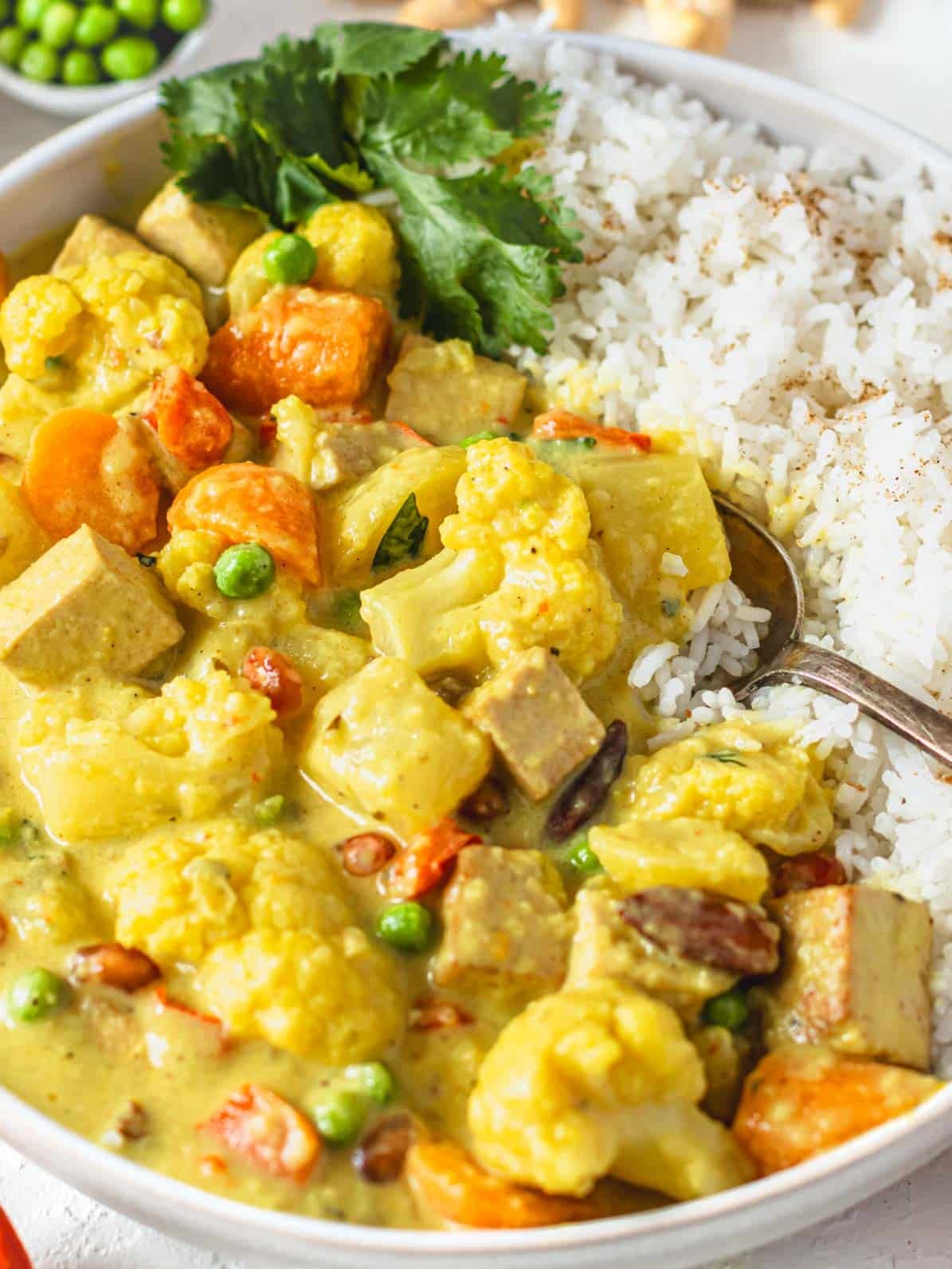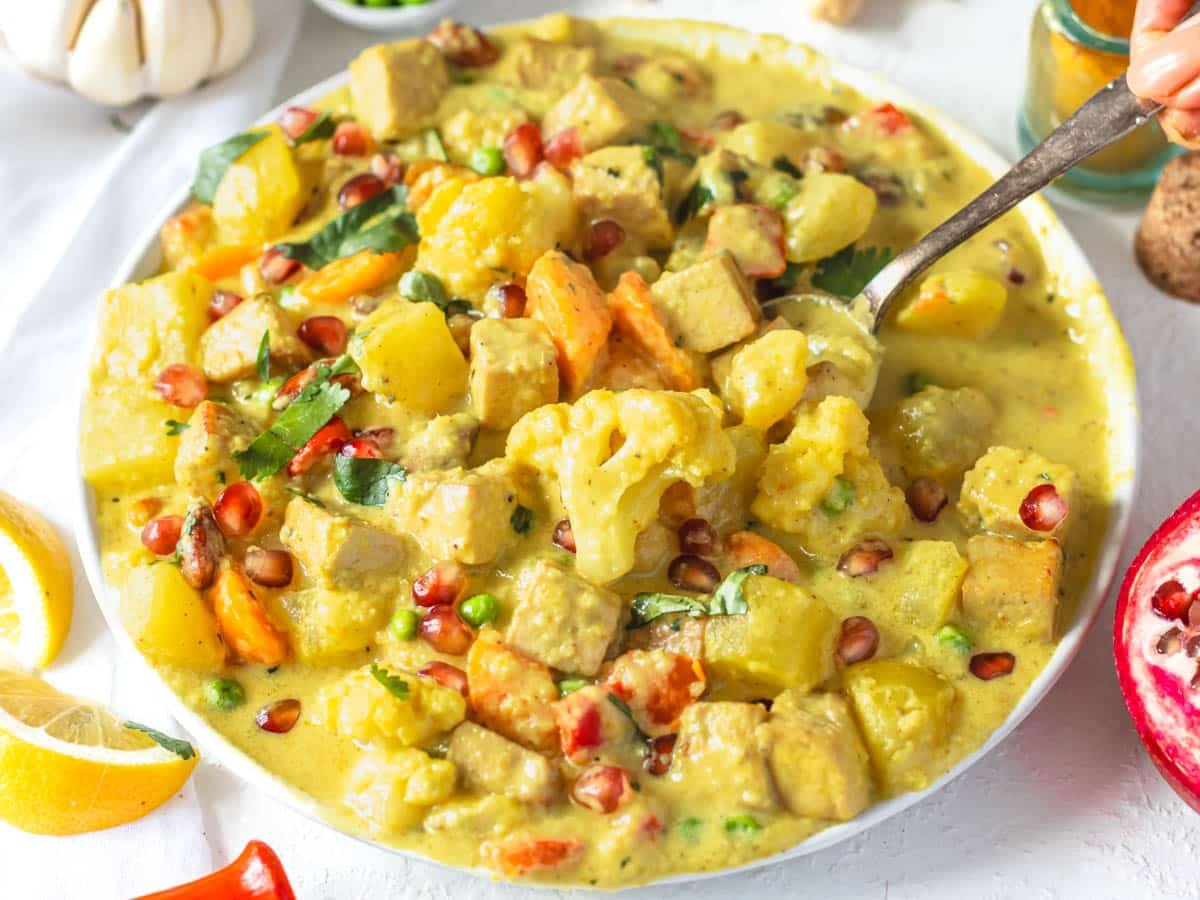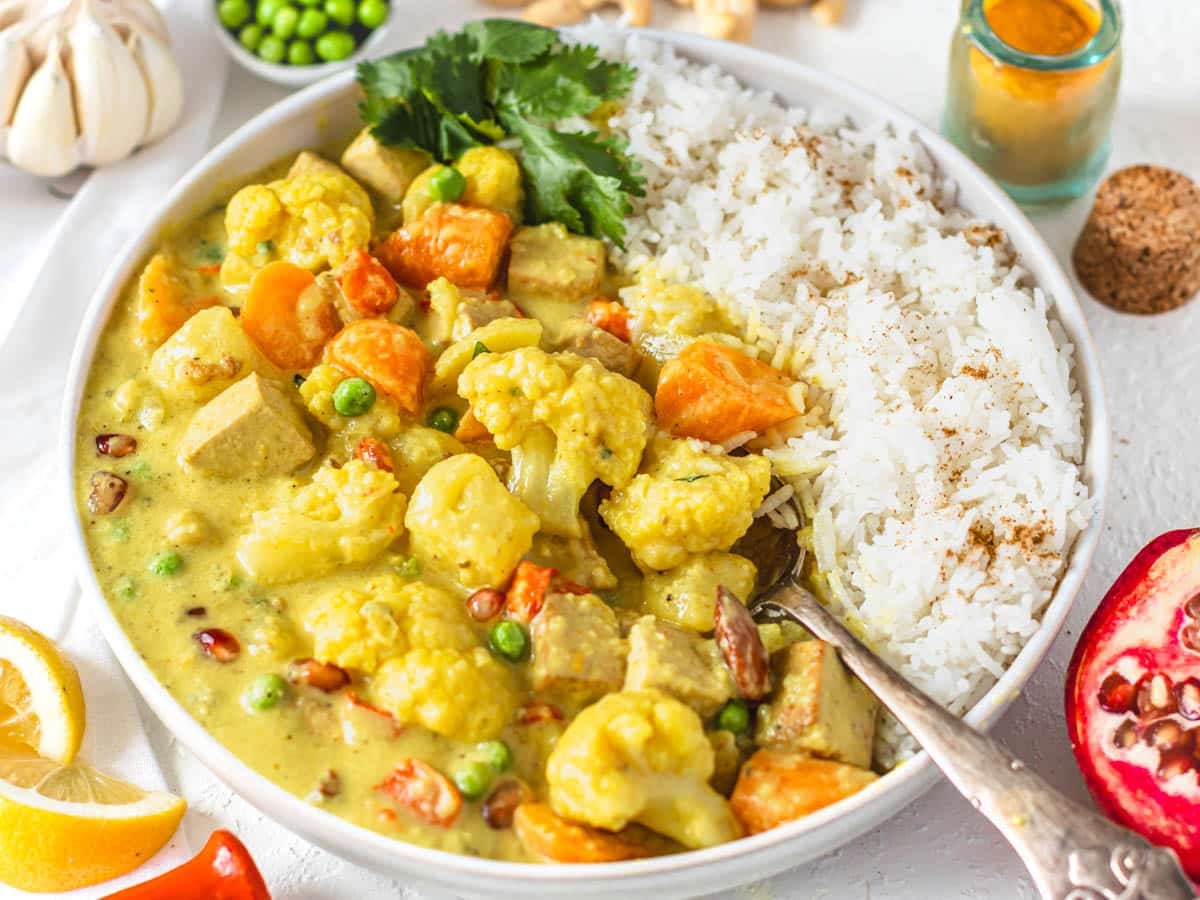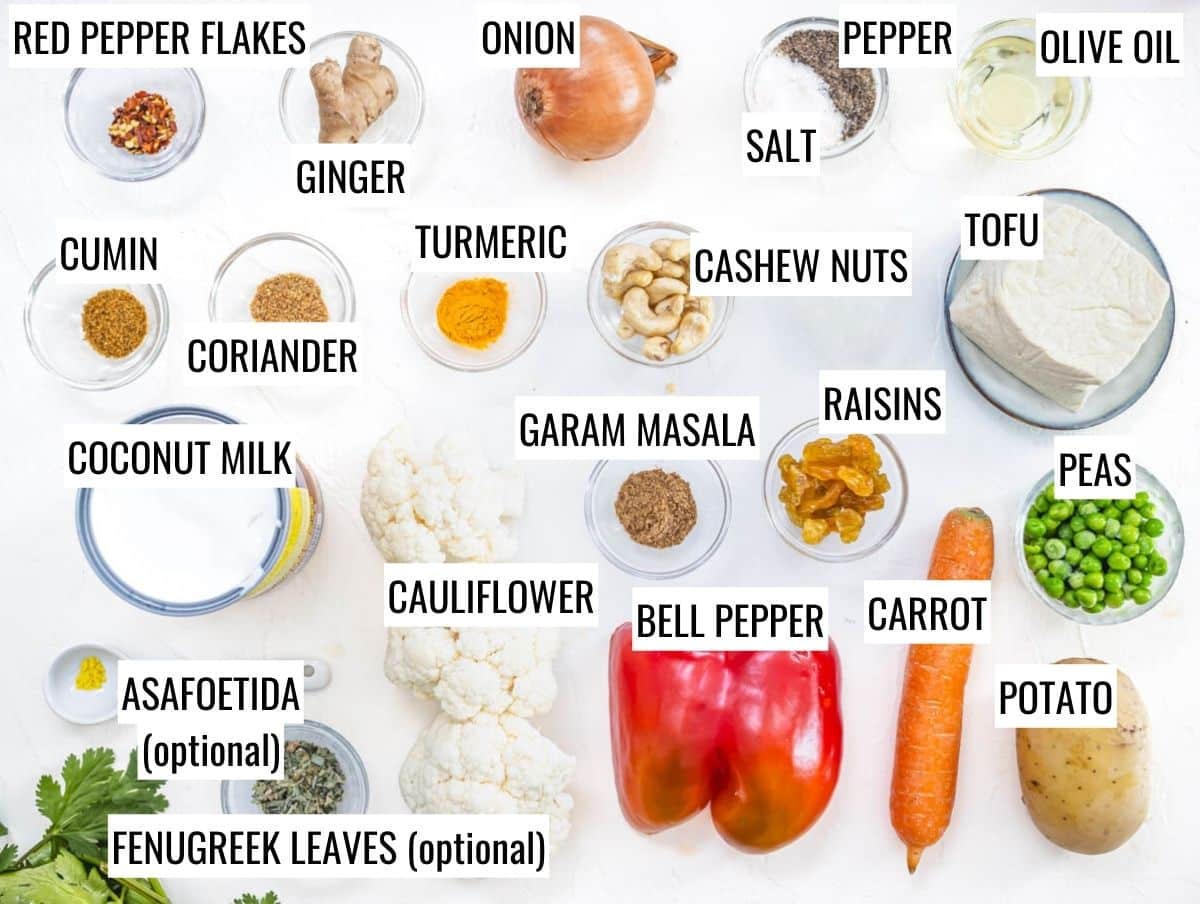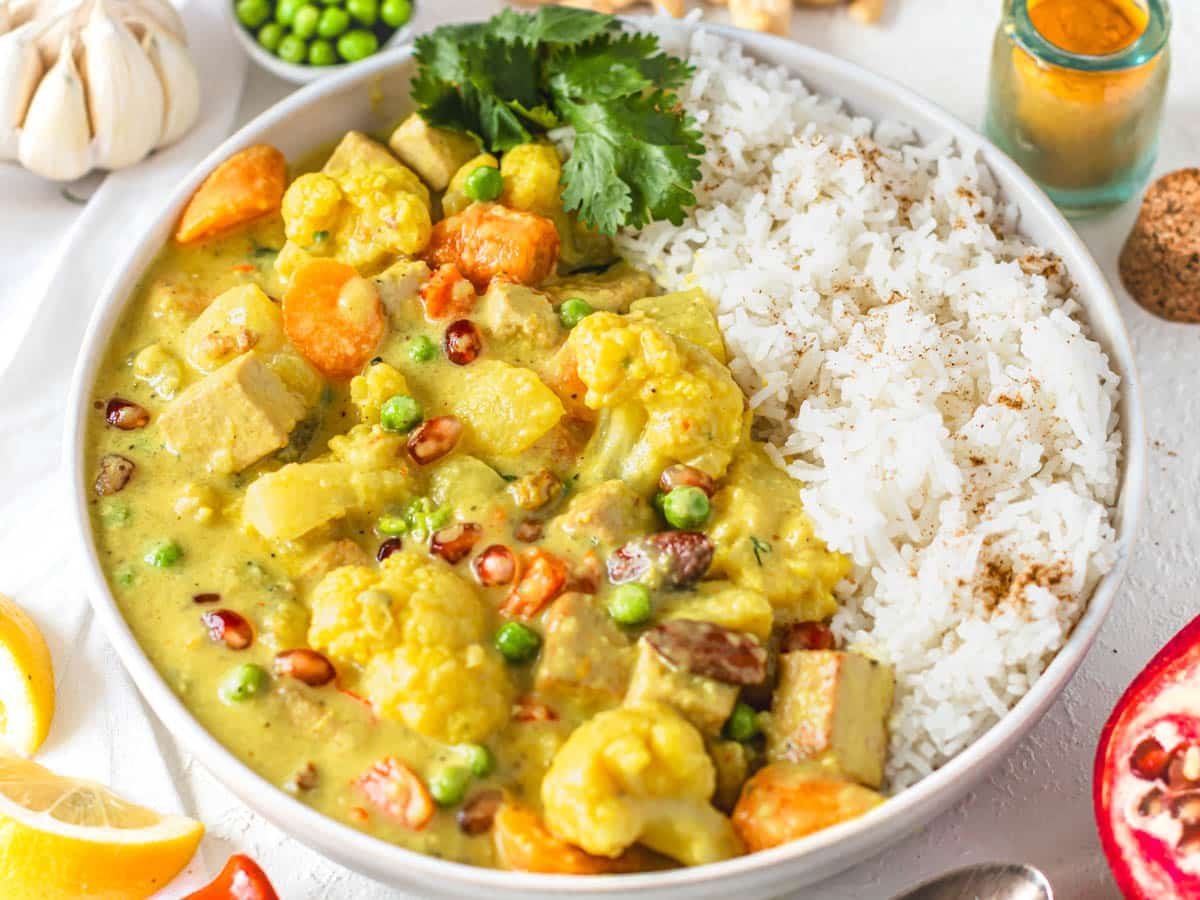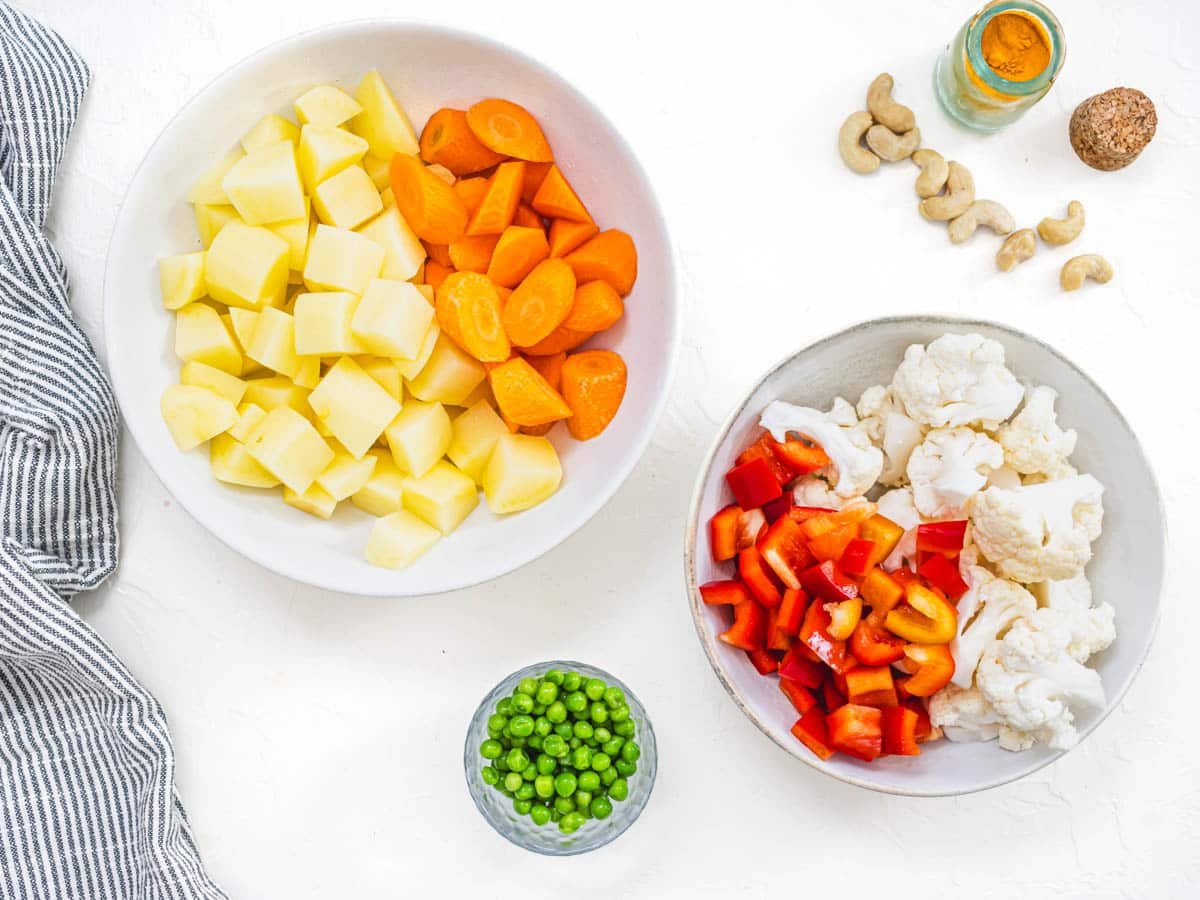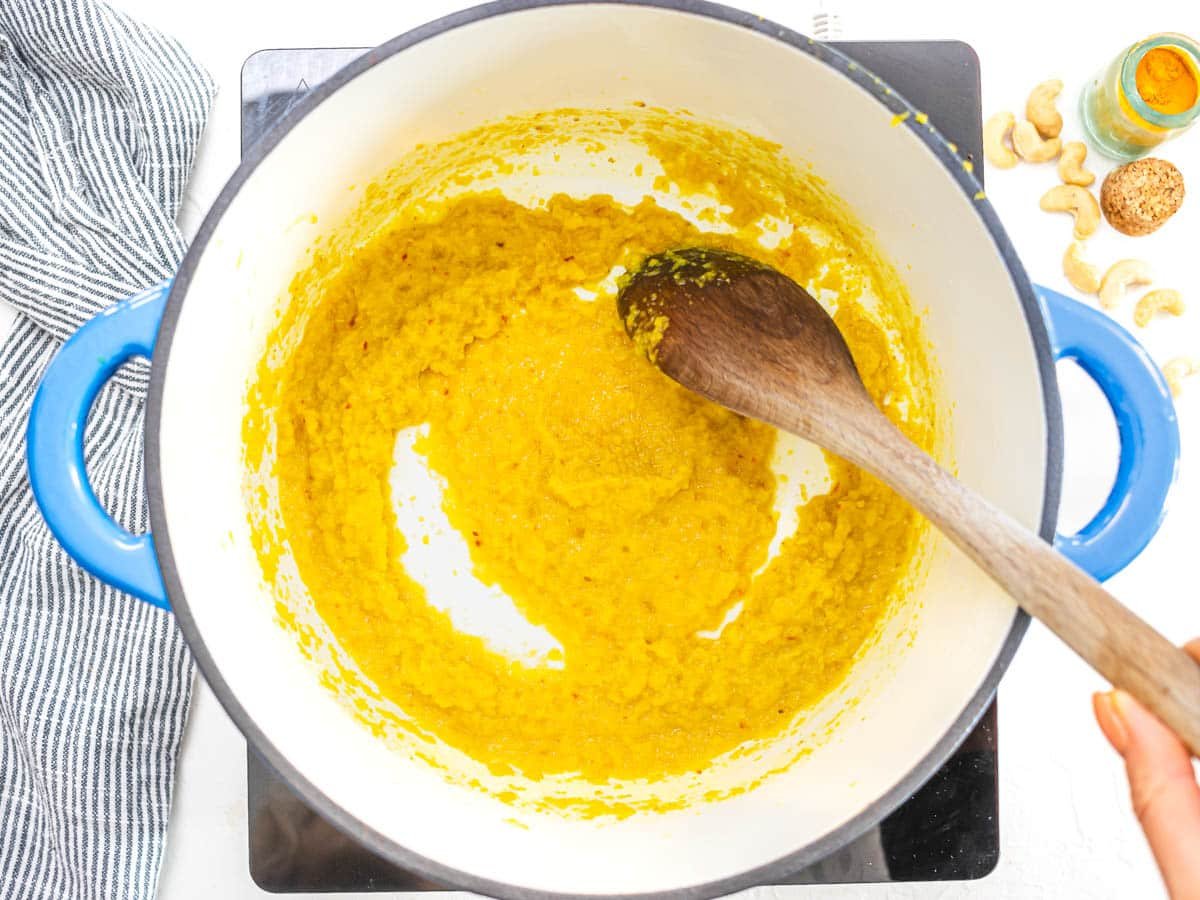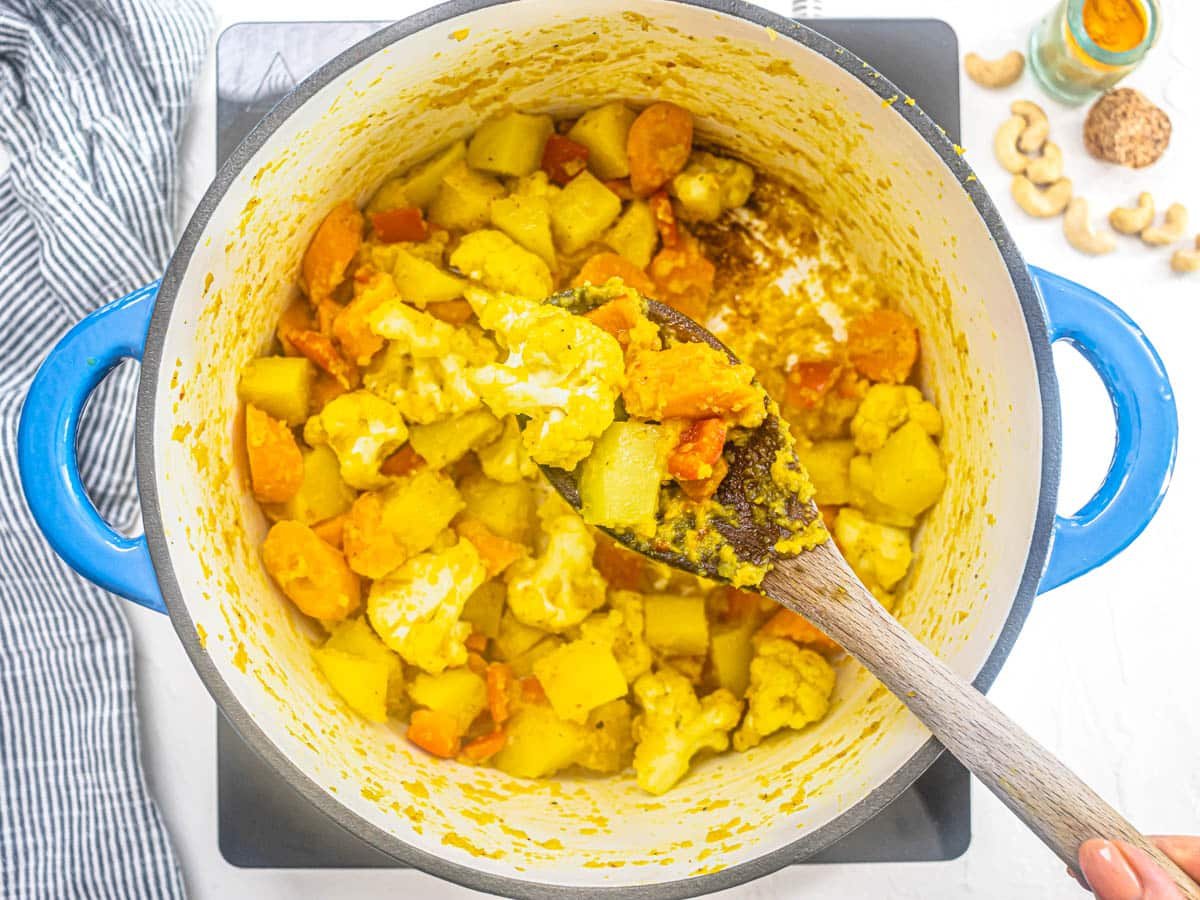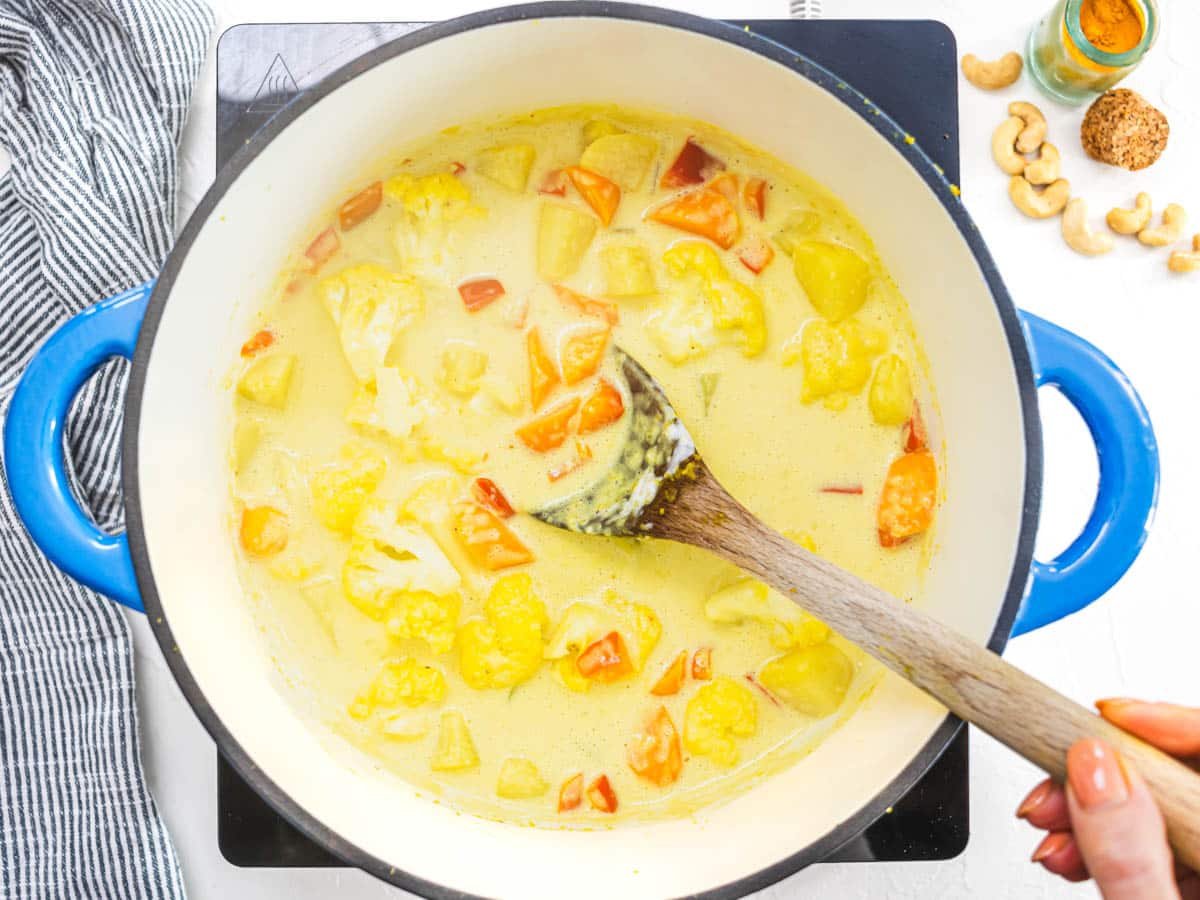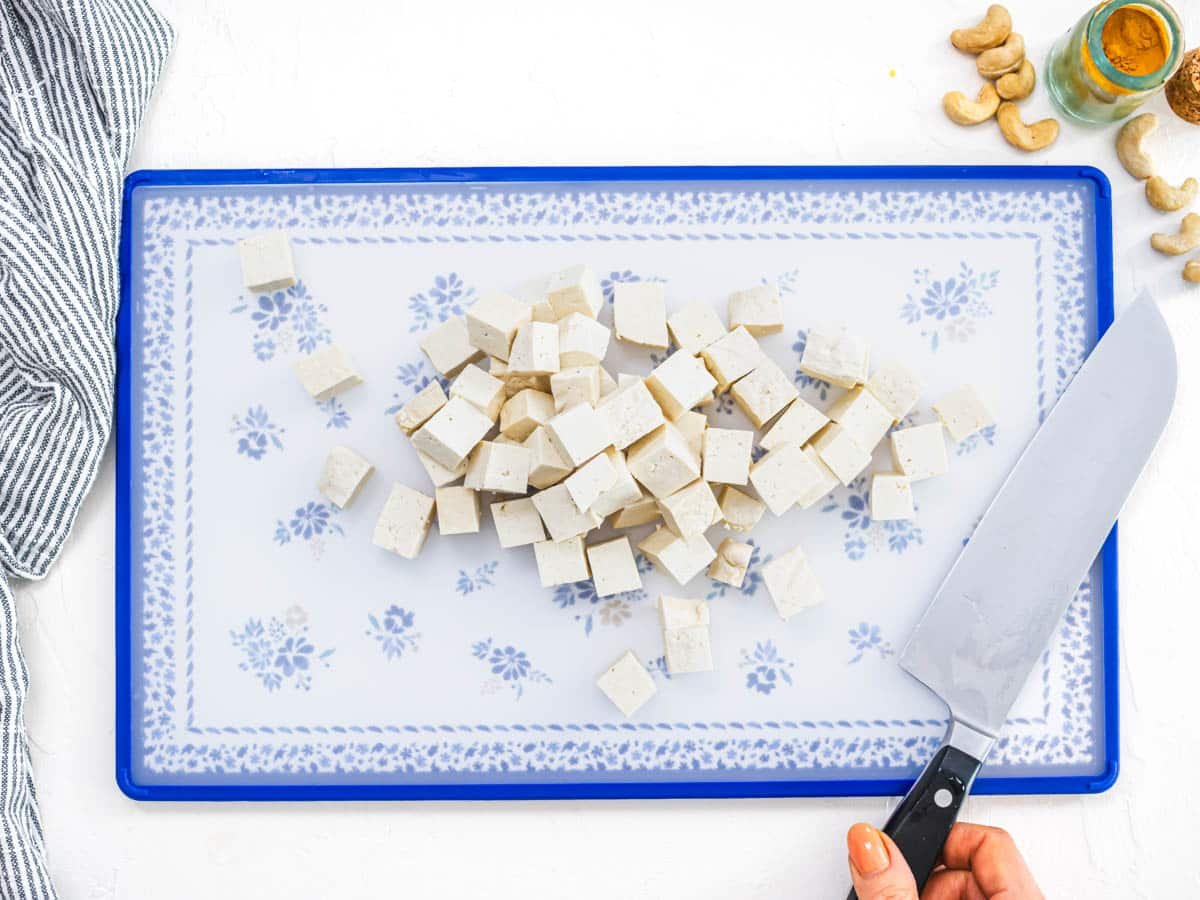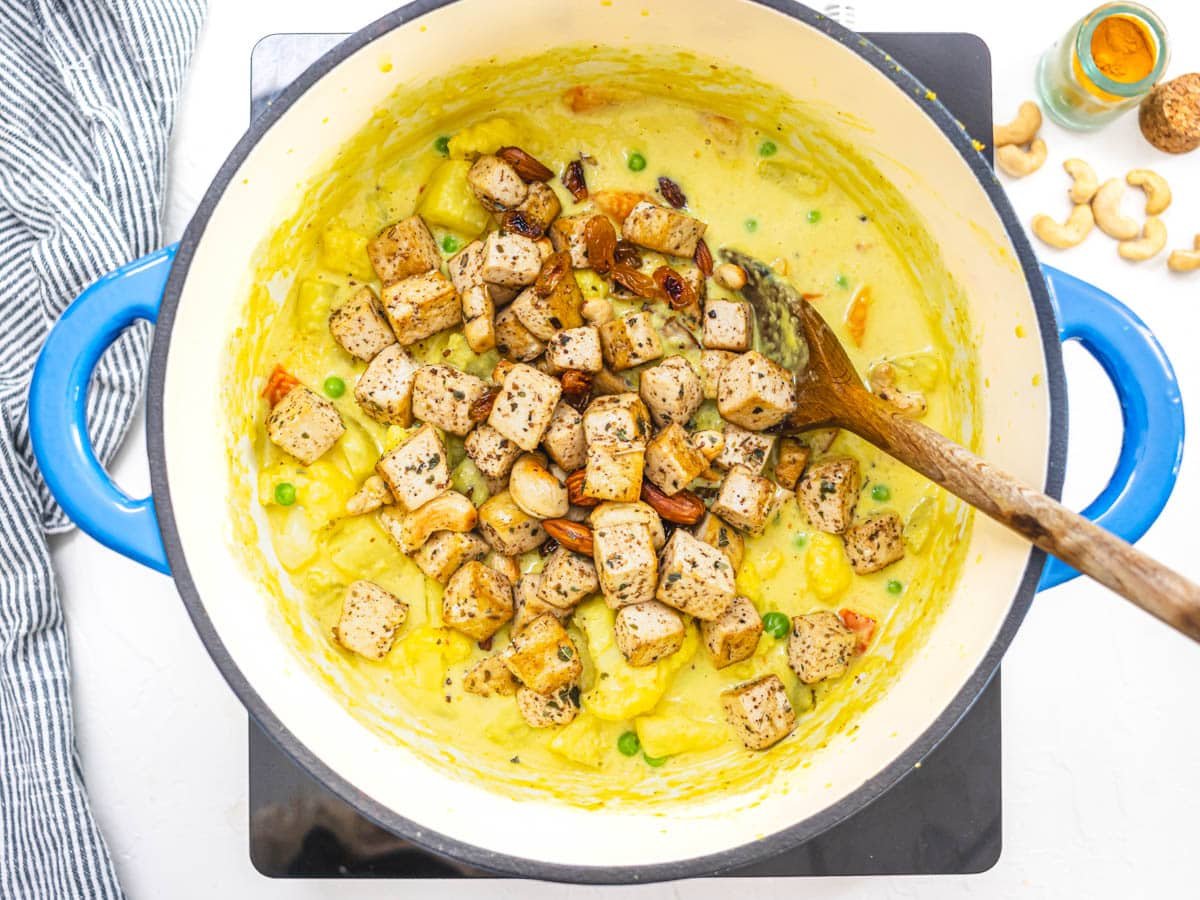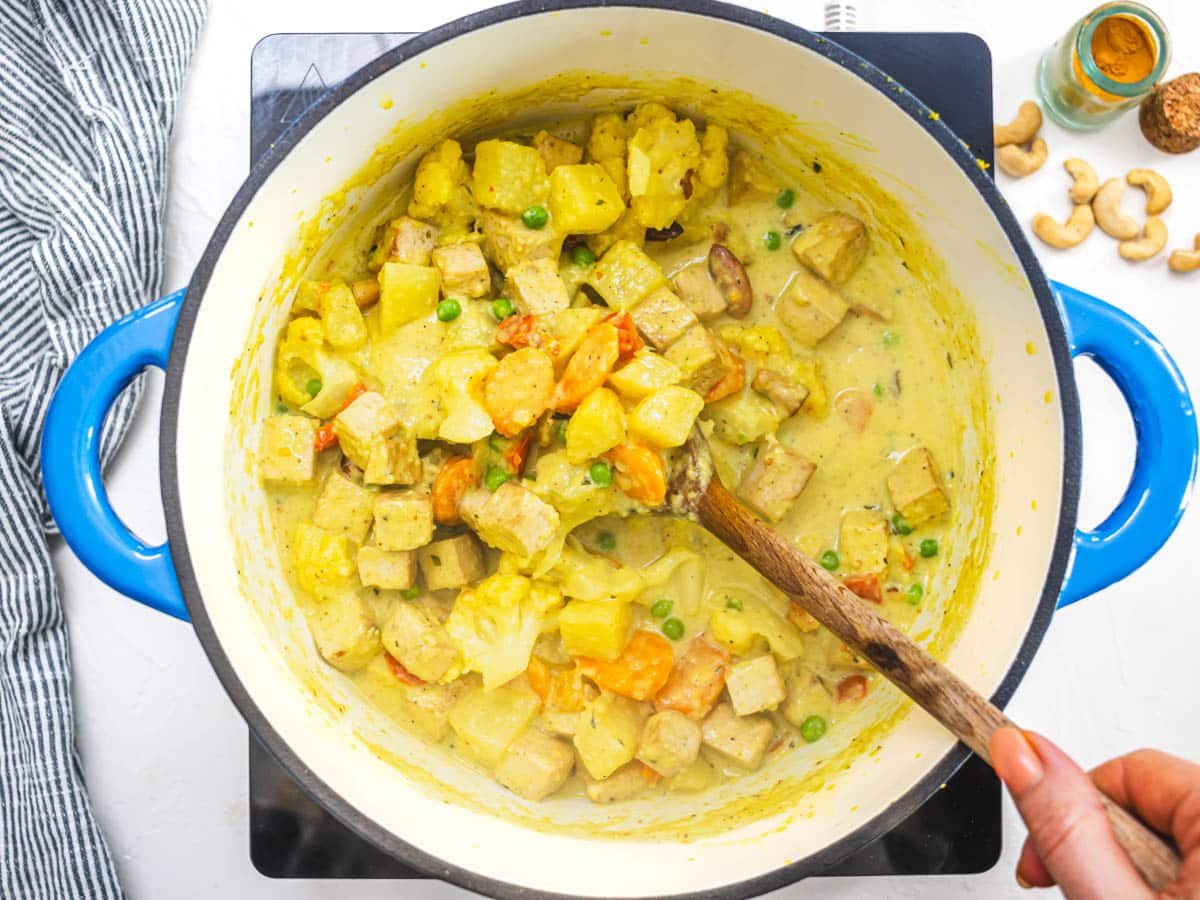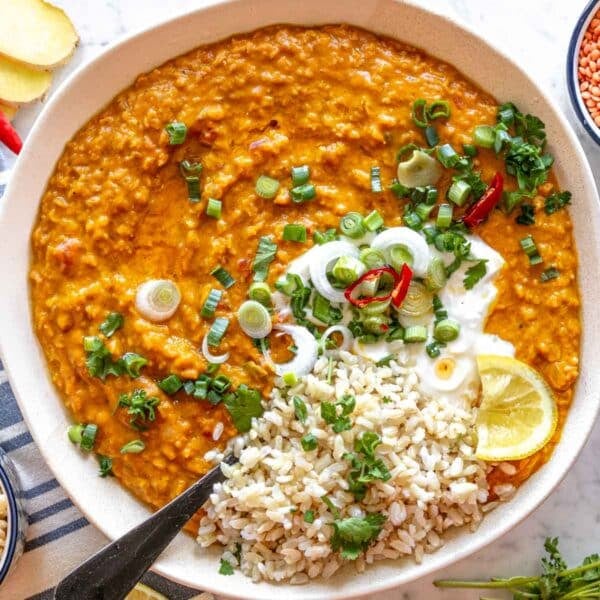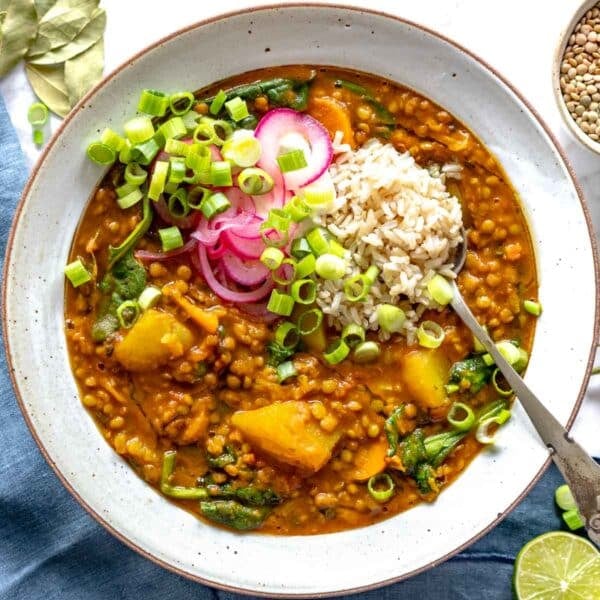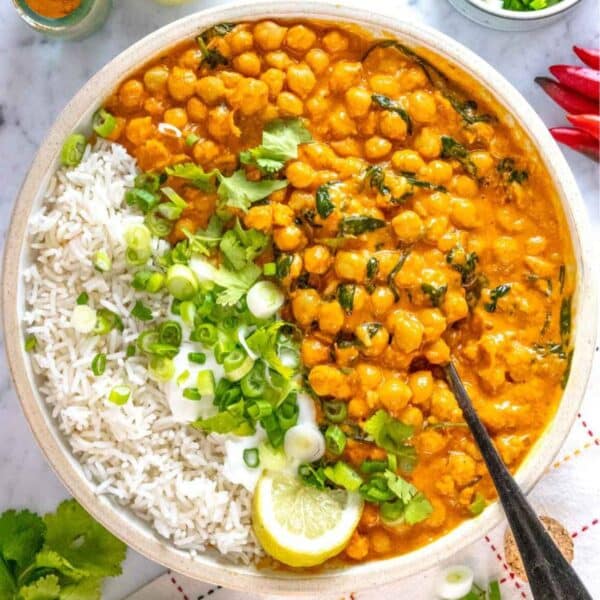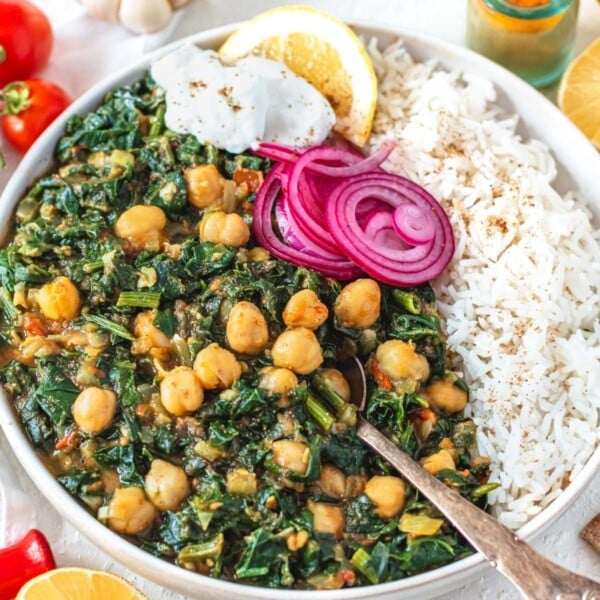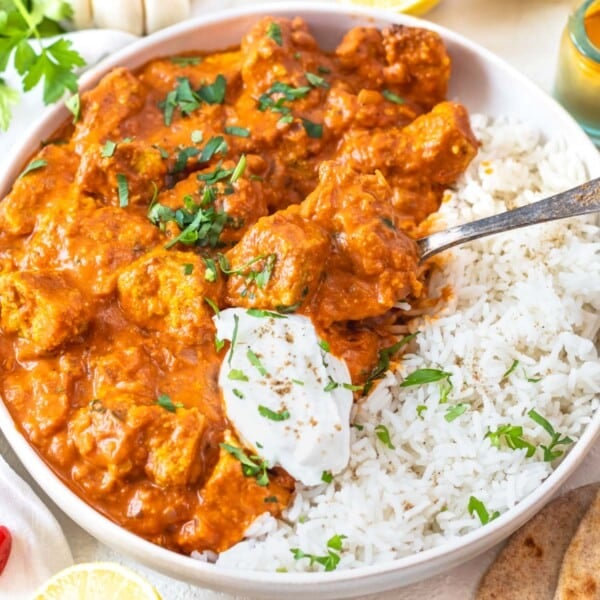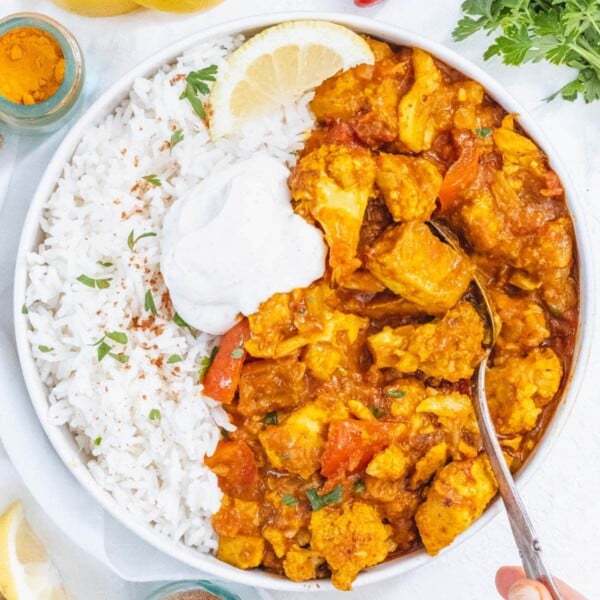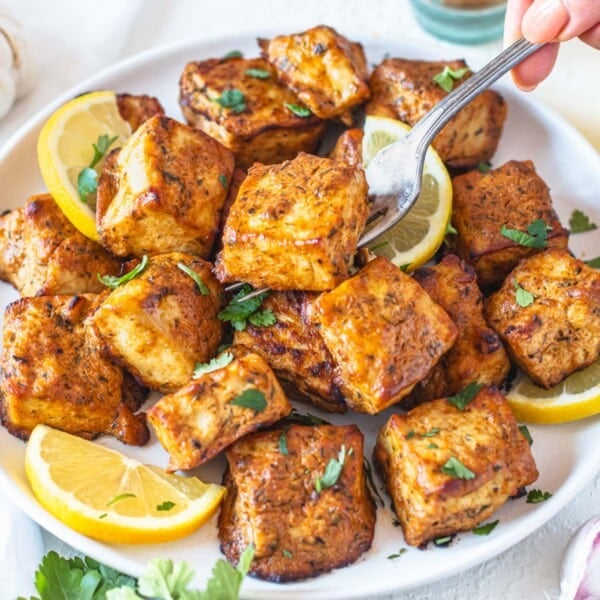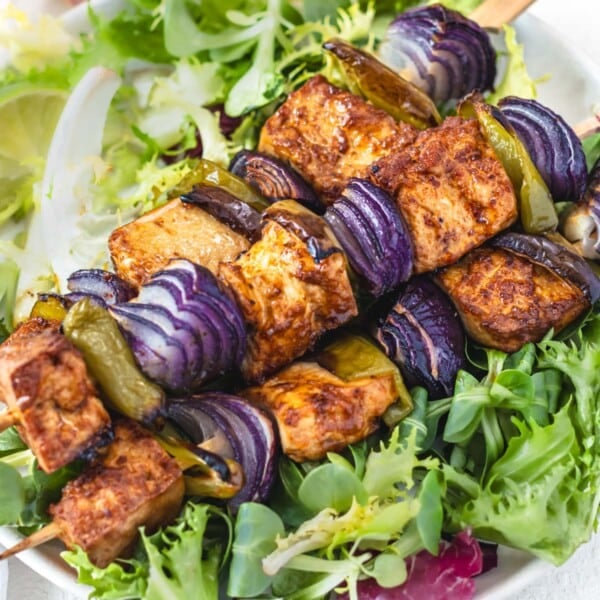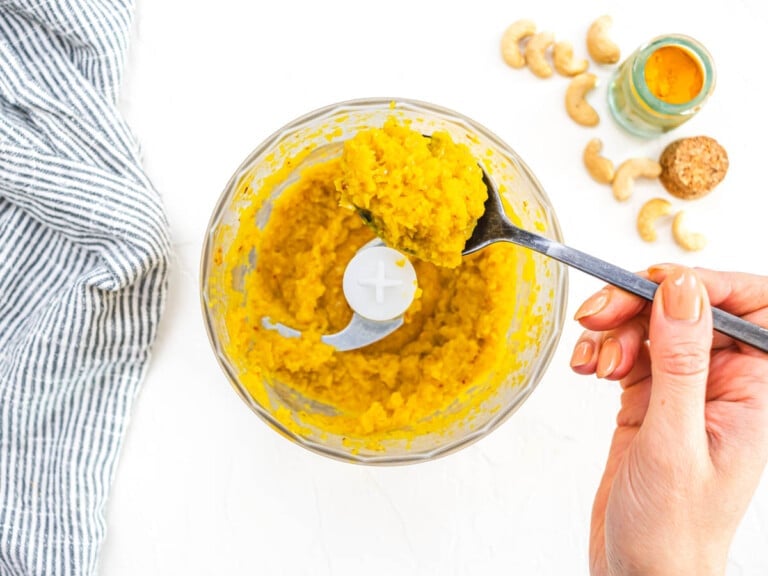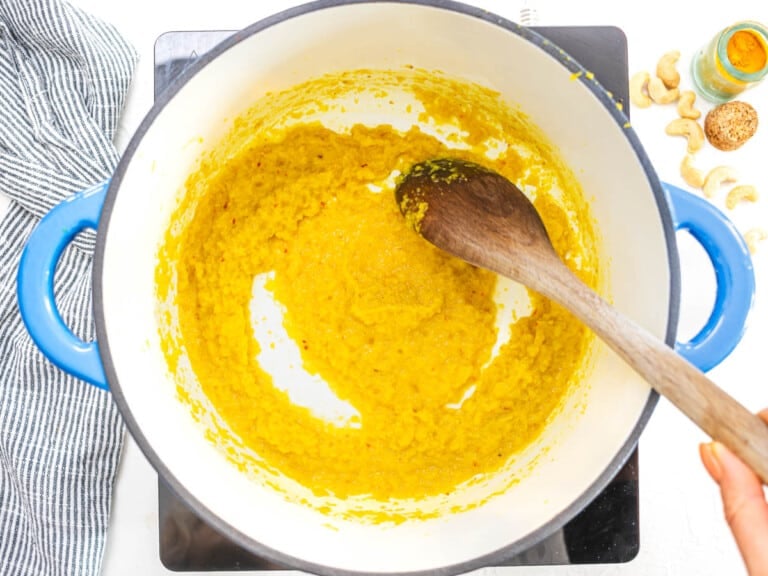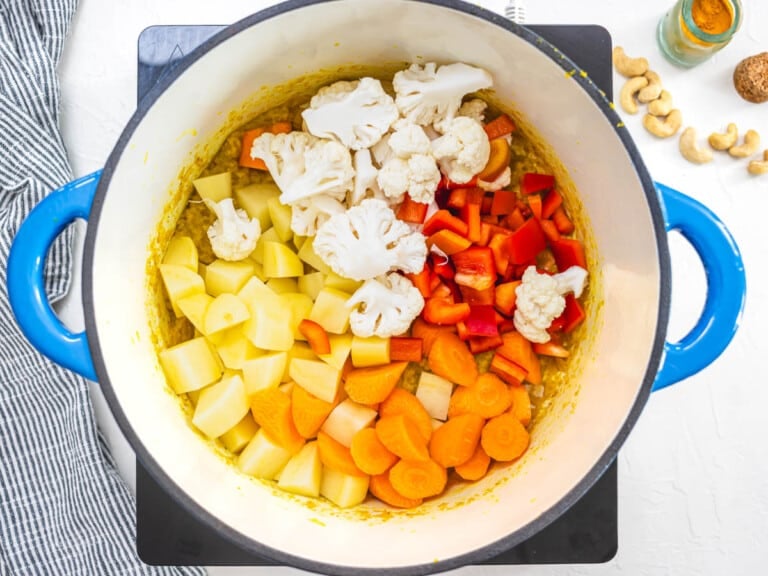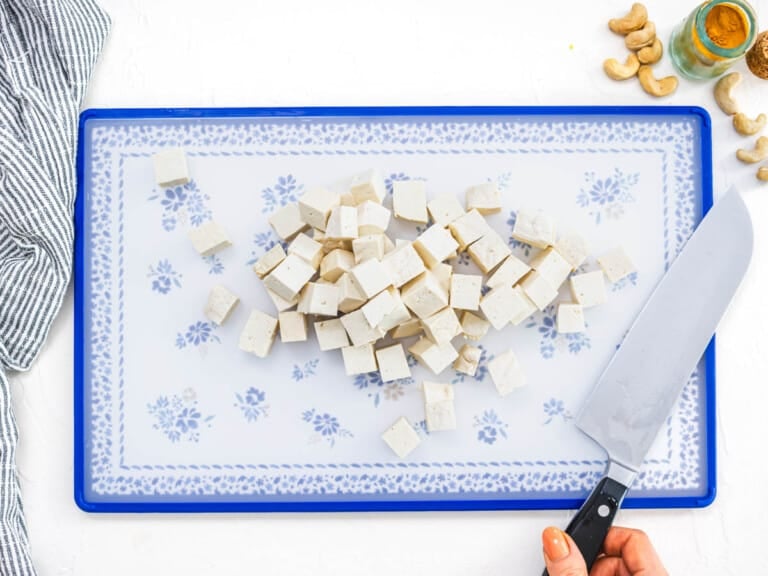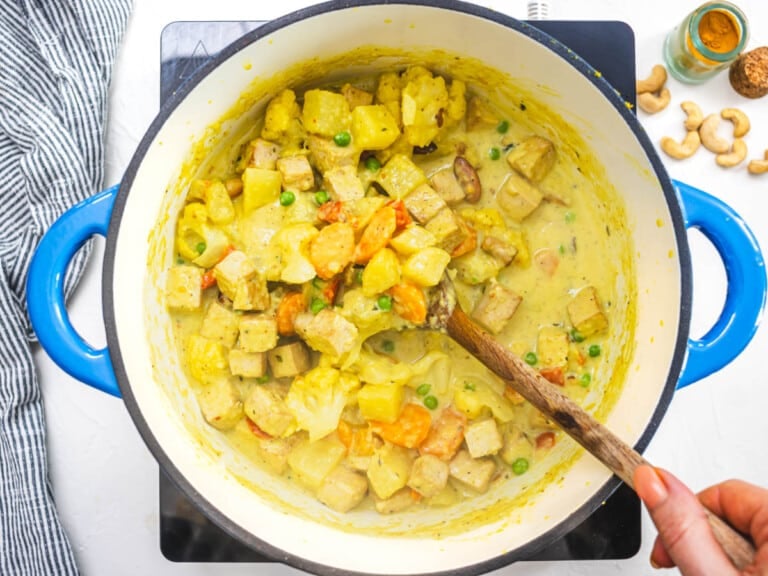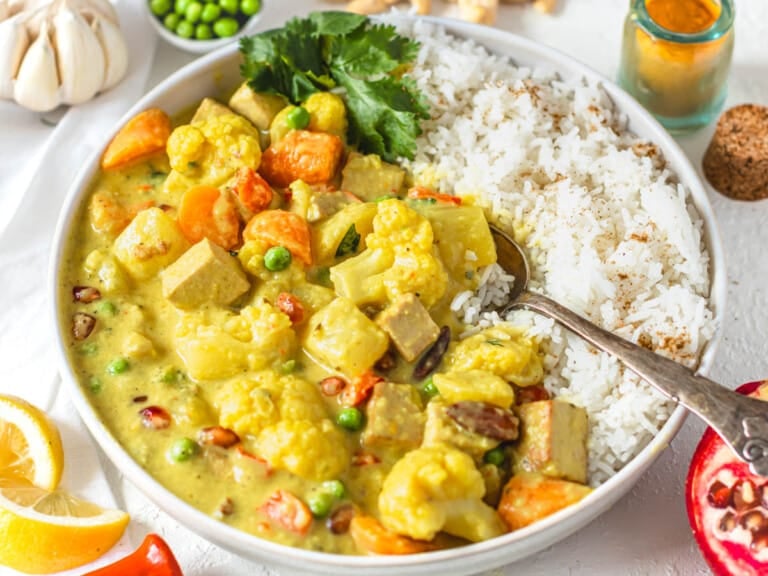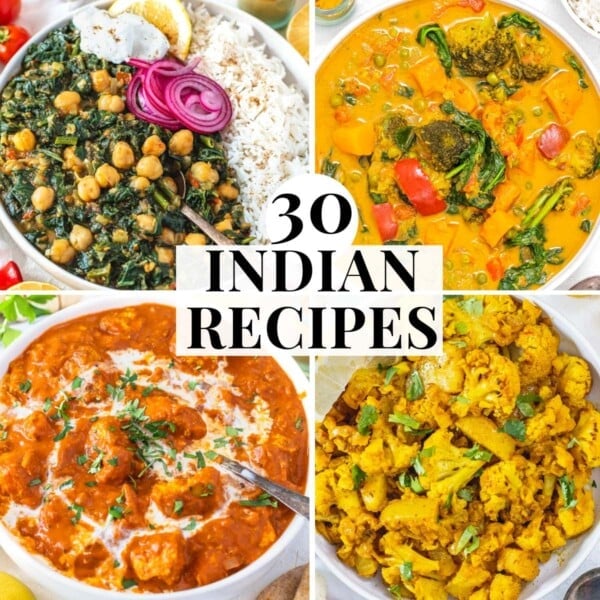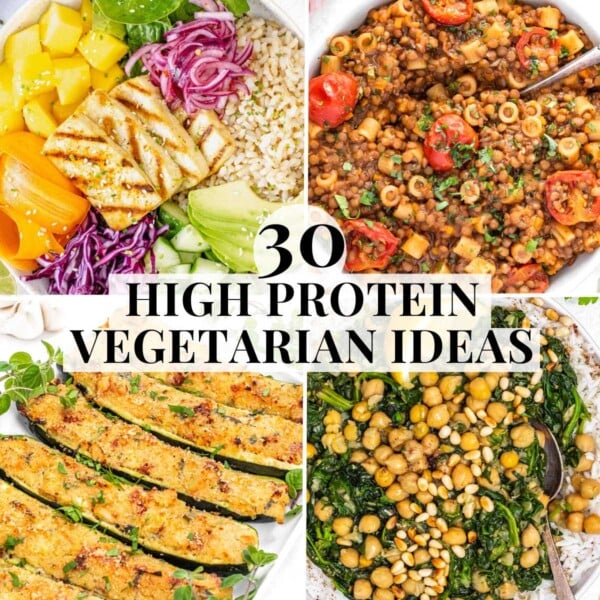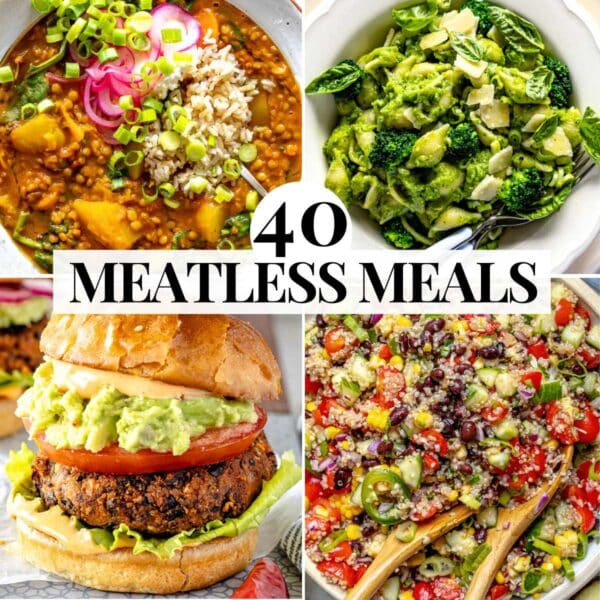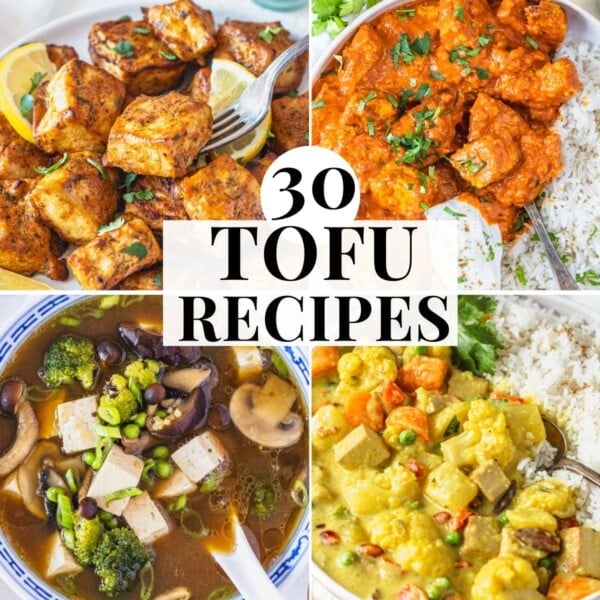But they do! Navratan Korma is delicious all around, one of our favorite curries to date, and excellent for a family dinner and meal prep. Dietary Note: this recipe is suitable for a vegetarian, vegan, and gluten-free diet.Don’t have time to read the full blog post? JUMP TO RECIPE HERE!
What is Navratan Korma?
Navratan Korma video
Ingredients & Substitutions for Navratan Korma
How to Make Navratan Korma
Serving Suggestions
Storage & Make Ahead
More Indian Recipes
More Tofu Recipes
Make with your favorite veggies, aromatic spices, nutty cashews, and a choice of coconut milk, yogurt, or heavy cream, similar to our Tofu Tikka Masala or Vegan Butter Chicken. The recipe will remind you of our creamy potato curry and tofu curry but with more vegetables. Navratan means “nine gems” in Sanskrit, and this delicious dish uses nine vegetables to create a perfectly balanced symphony of colors, textures, and flavors. That’s why we love making Navratan korma, especially when we want to empty our freezer and fridge. You can use your leftover veggies like frozen peas hiding at the back of your freezer, cauliflower florets lost in the bottom drawer of your fridge, wrinkly potatoes, and that halved bell pepper hiding behind the pickles jar. Navratan Korma should be slightly sweet, so we add raisins for natural sweetness. Traditionally, cashews and almonds are also added. Indian cooking is a beautiful tapestry of colors, flavors, and textures, and we adore it in all its oozy deliciousness. However, 1) since we eat what we cook here daily, 2) we want you to succeed in the kitchen and 3) feel great after eating our recipes; we decided to keep our Navratan Korma as simple and healthy as possible without compromising taste and texture. Like in all our creamy and easy curries and other Indian vegetarian recipes, you won’t find ghee, butter, or paneer in the ingredients list. We opt for heart-healthy olive or avocado oil for fat and firm tofu for the protein. They are both excellent in Indian cooking, although not traditional. Also, we list some spices as optional because they are not pantry staples and can be hard to find. Finally, we want you to have fun making this recipe, so feel free to improvise a little, and don’t worry if you are missing a vegetable or some spices. The dish will still be a success because you made it!
Oil
We recommend a light olive oil or avocado oil. Ghee or butter is more traditional in Indian cooking but rich in saturated fats, so we prefer to avoid them if we can.
Flavor Base (Masala)
A flavor base is a mixture of spices and other aromatic ingredients. For Navratan Korma, we recommend blending the flavor base to make the dish velvety smooth. You’ll need:
Onion: white or yellow onion. Ginger: fresh, peeled. Ground cumin Turmeric powder Ground coriander Red pepper flakes: substitute a fresh green or red chili. Adjust the amount of chili based on your heat tolerance.
We don’t recommend adding garlic or tomato to Navratan Korma as the dish should have a milder, sweeter, less acidic, and less pungent taste. Sometimes, other spices, such as cloves, cardamoms, cumin seeds, and cinnamon, can be added to the spice blend, but we don’t do that here.
Vegetables
Feel free to swap and mix the vegetables based on what you have. You can use fresh or frozen vegetables. We use:
Potatoes: always use potatoes for Navratan Korma because they add creaminess to the gravy. Carrots Cauliflower: substitute broccoli. Red bell pepper: substitute any other color bell pepper. Frozen peas: substitute green beans, snap peas, or edamame beans.
Coconut milk
We use coconut milk or light-coconut milk as a non-dairy alternative to yogurt or heavy cream. Coconut milk is used in southern Indian cooking, and it’s delicious in this recipe. Substitute half plain yogurt and half cashew or heavy cream for coconut milk.
Protein Mix
Tofu: firm or extra firm. It is not traditional in Indian cooking but nonetheless excellent in this dish. Substitute paneer (an Indian cheese) for tofu for a more conventional Navratan Korma. Cashews: substitute almonds for cashews or use both. Raisins: for a hint of natural sweetness. Substitute 2 teaspoons of sugar and 1/2 cup of diced pineapple or mango for raisins, but stir them in at the end, shortly before serving the dish. Garam masala: that’s an aromatic mix of spices. Substitute curry powder for garam masala.
Salt & Black Pepper
We recommend sea salt or kosher salt and freshly ground black pepper.
Serves well with
Fresh cilantro. Lemon juice or pomegranate seeds. Basmati rice, roti, chapati, or naan bread.
Optional Ingredients
Asafoetida or Hing: a traditional Indian flavor and umami enhancer; hard to find in Western supermarkets but easy to find online. Asafoetida has a funky smell and intense taste; you only need a pinch in each recipe. Dried Fenugreek Leaves or Kasuri Methi: a traditional Indian herb, also hard to find in Western supermarkets but easy to find online. It’s an aroma enhancer, used similarly to how Italians use dried oregano in their sauces.
Chop the vegetables
Peel and chop potatoes and carrots into small bite-size pieces. Chop the bell pepper into small bite-size pieces. Cut the cauliflower into small florets. Prep the frozen peas in a small bowl and keep them at room temperature so they thaw while you cook.
Make the flavor base
To a blender, add coarsely chopped onion, peeled ginger, ground cumin, turmeric powder, ground coriander, and red pepper flakes. Blend into a paste. Heat the olive oil in a large pot or Dutch oven. Add the spice paste and sauté on medium-low heat for 5 full minutes, stirring often. Add 2 to 4 tablespoons of water to prevent the paste from sticking to the pan.
Simmer the vegetables
Add the diced potatoes, carrots, bell peppers, and cauliflower, and season with salt and black pepper. Stir for about a minute to combine the veggies with the spice mix. Add water and coconut milk, cover with the lid cracked open, and simmer on medium heat for about 20 minutes or until the vegetables are fork-tender. Tip: It’s okay if the potatoes overcook slightly so the starch leaches into the sauce, making it extra creamy.
Prep the protein mix
Do this while the Korma simmers. Drain your firm or extra firm tofu, pat it dry with kitchen towels and cut it into small bite-size dice. Heat the olive oil in a large skillet (best if non-stick). Add diced tofu and salt, and sauté for 5 minutes, turning the tofu around often so that it browns on all sides. Add cashews, raisins, garam masala, asafoetida (optional), and fenugreek leaves (optional), and cook for 2 more minutes or until the nuts are golden.
Finish the Navratan Korma
When the Korma is almost done and slightly thinner than you’d like, stir in the protein mix and the defrosted frozen peas. Tip: Don’t let the gravy cook too much; it’ll get too thick once you add the protein. Also, remember that as coconut milk cools down, it thickens. If it gets too thick, add some boiling water. Finish cooking for a couple more minutes or until you reach your desired consistency, then taste and adjust for salt and spices. Let the Navratan Korma sit for 3-5 minutes before serving to allow the flavors to meld. We recommend topping it with fresh cilantro and a squeeze of lemon juice or a tablespoon of pomegranate seeds. Pair it with basmati rice, naan, roti, or chapati. Ensure the flavor base is fully cooked so the dish won’t taste of raw onion. In our experience, you’ll need the onion and spice paste to cook for 5 full minutes. Cut the veggies into small bite-size pieces of similar size Small pieces allow for faster cooking. Refrigerator: Store leftovers in an airtight container in the fridge for up to 4 days. Freezer: Let the Korma cool down completely, transfer it to a freezer-friendly container, and freeze it for up to 3 months. Thaw & Reheat: Defrost in the fridge over several hours. Stored Korma will thicken up, so you must add a few tablespoons of water when you reheat it. Reheat in the microwave for 2 minutes or in a saucepan on the stovetop for 5 minutes.
Lentil Curry
Curry Lentil Soup
Chickpea Curry
Chana Saag (Chickpea Spinach Curry)
Tofu Tikka Masala
Vegan Curry
Marinated Tofu
Baked Tofu
Indian Vegetarian Recipes
30 High Protein Vegetarian Meals
40 Easy Meatless Meals
30 Easy Tofu Recipes
